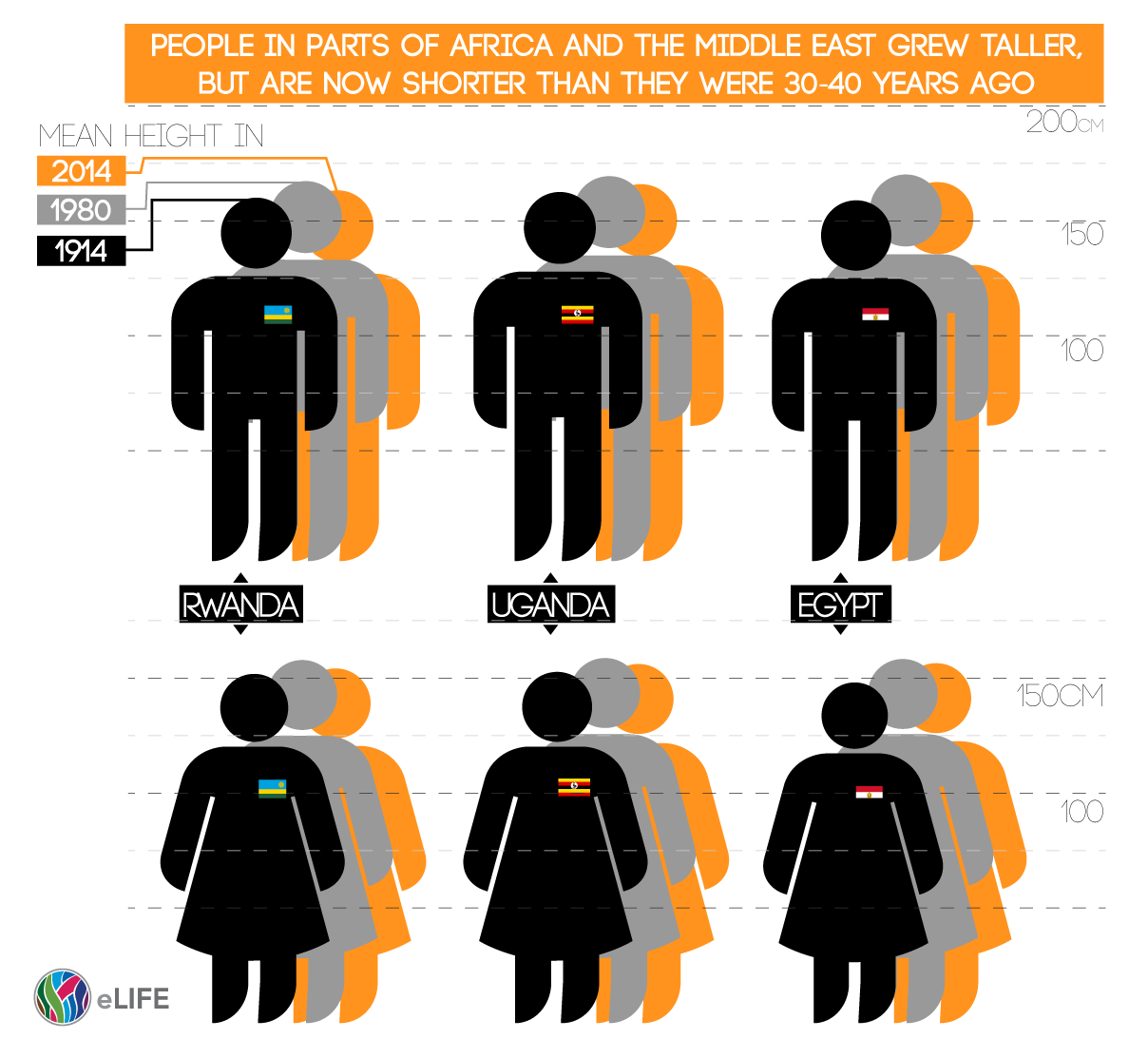Tall story
Interview with

James - So the tallest people were in Scandinavia, they were in the USA, Canada, Australia, and so on, and also some Pacific Islands. The shortest people were in parts of Central America, they were in the Middle East, in Southeast Asia. The average height of men was around 5'7" in the tallest countries; the average height of women was much shorter.
Kat - And now, how has that changed - again where are the tallies and where are the shorties and how much have they grown?
James - The tallest people now are in Europe, so the top ten countries for both men and women are European countries. On the other hand, the countries that have grown are spread round the world. So the countries that have grown the most are in East Asia, so Japan and South Korea have grown particularly dramatically. Iranian men are much taller and then there's been a lot of growth in southern Europe as well.
Kat - So this hasn't been across the board - the whole world is getting taller. There are unevennesses?
James - There are big unevennesses, yes. So every country in the world has grown taller but some have only grown taller by a matter of a centimetre or so. Whereas other countries, for example, women in South Korea are 8" taller than they were.
Kat - Wow! I wish I could be 8" taller. And are there any countries that are actually getting smaller?
James - There are countries that are smaller than they were 30 years ago, or 40 years or so.
Kat - So they had a peak and now they're getting shorter again?
James - Yes, particularly in Sub-Saharan Africa - we see this in various countries there. They reached a peak and since then their height has declined by 5-10 centimetres.
Kat - So Majid, we've heard how the data has changed - how these trends have changed. How some countries have got taller and then plateaued, some countries are getting much taller and some have got taller and then dropped off. What's behind these patterns of changes?
Majid - We do know from decades of work in nutrition and physiology that height is really a matter of nutrition, environment and the care that they get. And in some sense, the changes, the improvements and the variations reflect better and worse social, nutritional, and environmental conditions during pregnancy, in early childhood and adolescence, and they reflect that accumulation of that advantage versus adversity.
Kat - As a geneticist I know there's a certain proportion of height that is in the genes and a certain proportion that's to do with the environment. How does that balance out in different countries - do we think that maybe some countries have better height genes than others?
Majid - Sure. If we take a snapshot at one moment in one population, genes are hugely important and, again, some of the best studies seem to show that 20/30 per cent is due to genes. But genes don't change very fast over time, it's really environment and it's really nutrition. While there may be variations in genes between different countries, the belief is that its role is much smaller than differences in environment and nutrition.
Kat - So if it does mostly boil down to nutrition, what kind of foods are important?
Majid - So we should remember that nutrition isn't just about food. It's about the conditions in which the foetus grows, so the mother having a good environment and good nutrition, and it's about maintaining nutrition. Food does matter and animal products, animal protein, and dairy are quite helpful for growing taller. They include the components and nutrients that help with growth but it should also be the case that those nutrients are maintained. So a child that lives in a home that doesn't have clean water and actually gets repeated episodes of diarrhoea, they lose any nutrition that they would be getting. Or a child that doesn't have ready and high quality access to healthcare so that they are treated when they get an infection, when they have an illness, those things matter.
Kat - Why is it important? Obviously it's very interesting from a data-nerdery point of view to look at height and see how things have changed and we can draw some cool graphs, but why does height matter? What does it reflect?
Majid - Greater height is associated with longer longevity and better education and economic performance. So it's really the connection between early life conditions and later life health. For that reason it says a lot about how society thinks about its future.
Kat - So James, just one final question. I am 5' tall (about 152cms). Where in history would I have been tall?
James - In 1914, you would have been tall in Guatemala because the average height of Guatemalan women then was 4' 7", and you'd still be taller than average there because the average height was 4' 11".
Kat - So basically, I need to move to Guatemala?
James - Yes! Essentially that's the answer.
- Previous Joint secrets
- Next From the scientists to the media










Comments
Add a comment